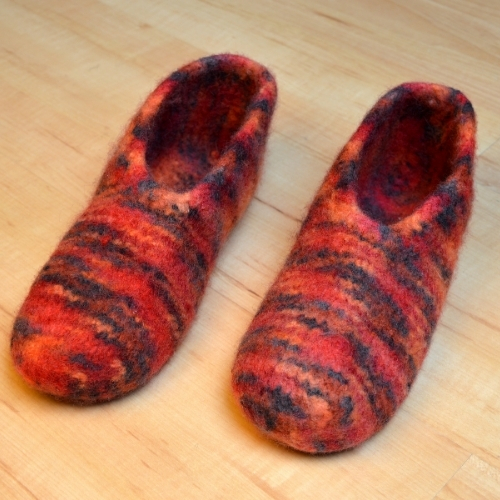How to felt yarn

If you are into knitting and crocheting, you will probably have heard about felting your yarn projects. When felting your project, looser knitwork or crochet is transformed into a firm, woolly texture that is particularly ideal for things such as slippers, hats or potholders. Here's a guide on how to felt your yarn work.
Use felting yarn for your projects
Some yarn qualities seem perfectly finished once you have done all the needlework, but you can also felt your projects. When you want to felt your finished knitting projects, you will benefit from using a yarn that is specifically made for felting.
Most felting yarns are 100% wool, as wool fibres bind together easily. Avoid superwash yarn, as it has been treated to better withstand washing and high temperatures and therefore does not felt.
If you follow a pattern, it will specify the particular type of felt yarn for you, but you can also experiment on your own. However, it is best to experiment with knitting or crochet samples so that your many hours of needlework will not be wasted in case it does not turn out right.
How to felt yarn
You felt your finished knitting and crochet projects by washing them once or repeatedly in a washing machine. When wool is exposed to water, heat and friction, the fibres will expand and begin to felt. The final result of the felting depends on your washing machine, yarn type and temperatures.
Wash your yarn project in the washing machine
Your yarn projects often need to be washed at least once at 30 or 40oC depending on your washing machine. Use a normal wool washing program without prewash and regular spin. If you are not satisfied after the first wash, just give it an extra round.
Tip: Some types of felting yarn must be washed at high temperatures before they begin to felt, while others need lower temperatures. It is therefore a good idea to do a felt sample before you machine wash your projects.
Create more friction
It can help along the felting process if you add a bit of regular wool detergent and a towel to the washing machine along with your felt projects. The towel will increase friction during washing, making the felting more efficient.
Shape your projects while they are still wet
You can pull and shape your projects to achieve the desired size and expression while they are still wet from the wash. If, for example, a pair of slippers has become too small, you can make them wet again and stretch them so they become a little bigger.
Remember that wool shrinks in the wash
When you knit or crochet, keep in mind that your work must be made approximately 20% larger than you want it to end up in the felted version. This will be taken into account in the knitting/crochet patterns, but if you are experimenting on your own, always remember to make your projects about 20% larger.

 Österreich
Österreich